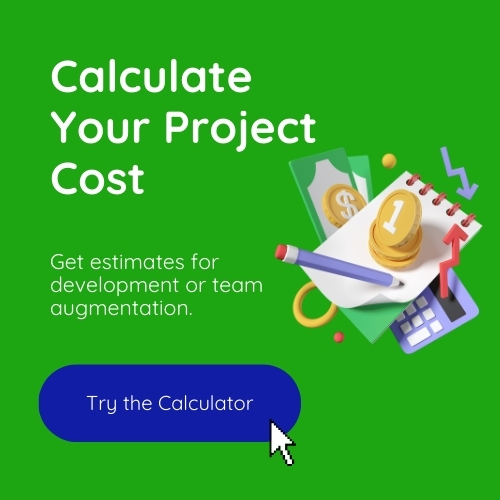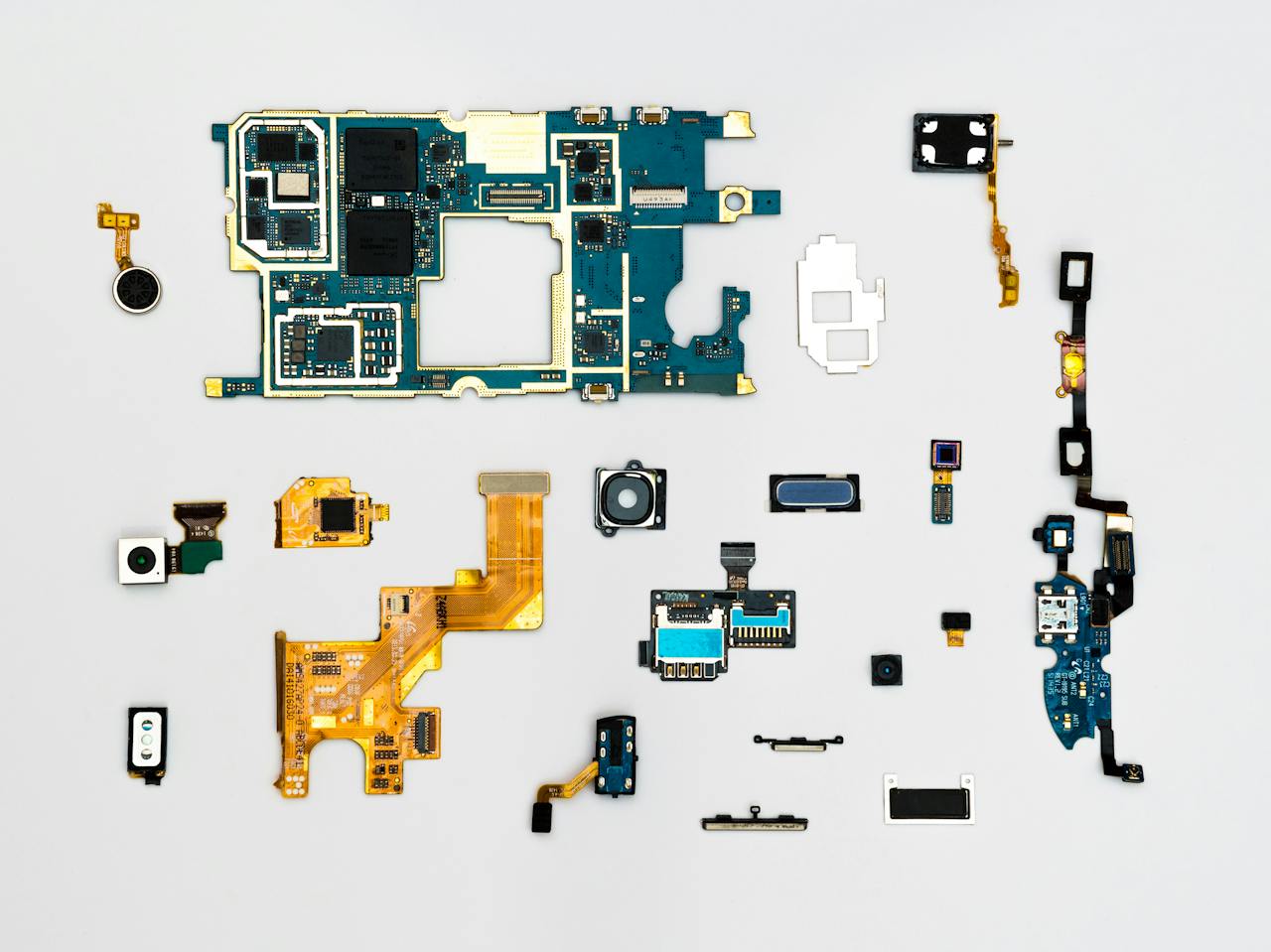
Product development is at the core of modern business success. As market players strive to adhere to dynamic customer requirements and remain in demand, they should essentially comprehend the roles that Proof of Concept (PoC), Minimum Viable Product (MVP), and a Prototype play in this process.
Custom product development is a necessity for every up-to-date business, which combines innovation, precision, and customer-centricity. PoC, MVP, and Prototypes guide businesses toward efficiency, optimization, and decreased risks, ensuring that the development process is not only accelerated and qualitative but also aligned with user expectations.
Let’s single out the distinct roles of PoC vs prototype vs MVP concepts. We’ll determine their unique concepts, examine their use cases, and find out how they navigate the complex points of product development. You’ll obtain a comprehensive understanding of these three vital project types, assisting you in making informed decisions that bring your product development efforts to success in the dynamic market.
Table of Contents:
Proof of Concept (PoC)
Proof of Concept (PoC) is the core element of product development, an inalienable step, where ideas are validated and enhanced. Let’s delve deep into the essence of PoC, understanding its purpose, objectives, and its role in product innovation.
Definition
A Proof of Concept is an incomplete solution based on primary research, a step into the field of innovation to be researched. It serves as a small-scale experiment aiming to validate the feasibility of a project concept. Practically, a PoC answers the question, “Can this idea be brought to the real environment and become useful?”
Purpose
At its core, a PoC strives to confirm that a concept is technically feasible, showcasing that it can be implemented with the allocated resources, milestones, and technologies.
PoC doesn’t relate to demonstrating that an idea operates in a manageable environment; it’s about outlining the practical challenges, limitations, and potential setbacks that may arise when scaling the concept to a full-fledged product for the market. Applying analysis and validation, a PoC highlights the way toward transmitting a rough concept into a tangible market solution.
Use Cases
A PoC is commonly employed in cases involving recently invented technologies, high complexity, and projects that demand a well-planned approach. Basically, a PoC is excellent in reducing risk and uncertainty for unique, previously unimplemented products and features.
Key Characteristics and Benefits
The specific benefits of PoC that make it distinct are limited scope, experimental nature, and ability to mitigate risks earlier within the development flow effectively.
-
- Feasibility assessment. PoCs allow determine if a concept or idea can be practically implemented, decreasing the risk of investing in non-viable projects.
- Risk mitigation. They enable early identification of technical and operational challenges, reducing uncertainties in large-scale development.
- Cost savings. Traditionally, you’ll invest in lower expenses and low-resource initiatives, making the PoC cost-effective for experimentation.
- Time economy. They allow for rapid testing and rapid decision-making, accelerating project time-to-market.
- Innovation and technology adoption. PoCs provide enhanced innovation and the latest technology adoption by promoting creative problem-solving and experimentation.
- Validation. Successful PoCs validate the potential of a concept, delivering confidence for further development.
- User feedback at early stages. You can gather feedback from users at early stages, which enables you to refine the concept based on the market environment insights.
- Resource allocation. Such a concept guides resource planning and distribution by indicating which ideas have the most potential for success.
Creating an Effective PoC
The process of designing an effective PoC incorporates the key considerations as follows.
-
- Precise objectives. Define your PoC’s goals and the idea you aim to prove, validate, and assess its relevance. Precisely describe the issue you’re addressing or the solution you’re testing.
- Target audience. Determine who the PoC addresses (e.g., stakeholders, investors, end-users). Thus, tailor your approach accordingly.
- Scope control. Make sure the scope of your PoC is narrow and focused. Avoid implementing excessive features or complexities that may distract the process.
- Data collection. Define the way you’ll extract, assemble, clean, and research data during the PoC. Ensure the information is valuable to your objectives.
- Real environment conditions. Create real-world conditions as accurately as possible to get the most revealing results.
- Milestones and financial resources. Set clear timelines and budget boundaries. This helps you keep the PoC focused and doesn’t allow going over the line.
- Measurable metrics. Define Key Performance Indicators (KPIs) to evaluate the PoC’s success. Needless to say, these should align with your objectives.
- Exit strategy. Schedule the following activities after implementing the PoC – whether the project results in the full product requiring a further extension or won’t be continued.
- Industry compliance. It’s obligatory to guarantee that your PoC adheres to legal and compliance standards relevant to your domain.
- Security and privacy. Prioritize taking care of security and data privacy concerns early in the PoC to present yourself as a credible project in the eyes of users, stakeholders, and investors.
Minimum Viable Product (MVP)
It’s time to get acquainted with the concept of the MVP, a key stage in the product development process.
Definition
A Minimum Viable Product is more than just a software product that comprises a minimal set of features to satisfy early users and collect feedback for future development. It is designed to test a product’s core concept and functionality, implementing it faster and more cost-effectively, allowing a company to validate its idea, assemble user reviews, and make necessary modifications prior to the development of a fully-fledged product.
Purpose
The integral goal of an MVP is to launch a product with the minimal and essential set of features required to test its viability and gather user feedback. Within this approach, an MVP cuts down time and resource investment, allowing for faster iterations and market entry.
Use Cases
Dropbox, a cloud storage and file-sharing service we all know and use globally, was primarily implemented as an MVP solution. It was launched with basic yet sufficient and effective functionality, allowing users to store and synchronize files in the cloud and transfer them to others. This set of fundamental features caters to optimized file storage and sharing, which has caused Dropbox to gain widespread adoption. One of the techniques Drew Houston, a CEO of DropBox, used to validate the concept for Dropbox is so powerful – and so simple – that most entrepreneurs overlook it. As a result, the MVP’s success allowed Dropbox to secure further investment and expand into a multi-billion dollar business.
Key Features and Benefits of an MVP
The core characteristics and benefits of an MVP.
-
- Faster time to market. Custom MVP development allows the introduction of the product to the market quickly, gaining a competitive advantage and becoming the first one to offer a unique concept.
- Cost efficiency. This concept decreases the initial investment, as only essential features are implemented, reducing the necessary resources. As a result, an MVP development cost is much lower than the costs to build a complete product.
- User orientation. MVPs are built based on real user feedback, ensuring that the final product meets customer needs and expectations.
- Risk liquidation. Verifying the concept with an MVP minimizes the risk of investing in a full-fledged product that might not succeed.
- Iterative development. An MVP facilitates ongoing improvements and iterations based on user feedback, enhancing the product’s quality.
- Early user engagement. Clients are provided with early access to the product, building a user base and bringing awareness to the launch.
- Market validation. An MVP tests the market’s response, confirming the demand for the product.
- Resource allocation. An MVP helps startuppers allocate resources wisely, focusing on the features that matter most to users.
- Competitive advantage. Being the first to market with a viable product can establish a company as a leader in its industry.
Features
The goal of the MVP feature set is to identify and prioritize the most essential features that address the core problem or need the product aims to solve. This typically involves close collaboration between product managers, developers, and user experience designers to define the minimal set of functionalities required for a viable product. It’s crucial to focus on features that provide value to early users while excluding those that are great to implement but not essential to the product’s primary purpose. Besides, the selected essential features should align with the product’s goals and be feasible to implement within the set time and available resources.
The Role of Customer Feedback
Within the MVP, user feedback serves as a valuable source of insights and guidance throughout the product’s software development lifecycle. It essentially ensures that the MVP addresses real user needs and pain points. In addition, an MVP provides essential information on what features are working and which need improvement, allowing for iterative development. Furthermore, user feedback informs the prioritization of features, assisting the development team to focus on enhancements that align with user expectations, resulting in a more user-centric and efficient final product.
Unsure of MVP Costs?
Learn the factors that impact MVP development costs and get a clear budget estimate.
Prototypes
We’ll now move on to investigating the prototypes, their real-world applications, and the profound benefits they bring to the development process.
Definition
Prototypes are preliminary models or representations of a product, system, or design. They are created to visually and functionally convey the concept and features of the final product. Prototypes are often used in various industries to validate ideas, test functionality, and gather feedback before beginning full-scale development.
They serve as a critical tool in the design and development process to refine and perfect a concept before moving forward with production or implementation.
Types of Prototypes
The following list distinguishes between the diverse types of prototypes:
Feasibility prototypes
-
- Preliminary models to assess technical, economic, or design viability.
- Basic, often non-functional, representations of a concept or idea.
- Used to determine if an idea or project is worth pursuing.
Low-fidelity user prototypes
-
- Simple, paper-based, or digital sketches and mockups.
- Quick and inexpensive to create.
- Primarily used for early user testing and concept validation.
- Focus on the core functionality and user interactions.
High-fidelity user prototypes
-
- Detailed and interactive representations of the final product.
- May include realistic visuals, animations, and functional elements.
- Used for in-depth user testing and to showcase the product’s look and feel.
- Helpful for fine-tuning user experience and gathering detailed feedback.
Live-data prototypes
-
- Prototypes that are built using real or near-real data.
- Functioning models that simulate the actual user experience.
- Often used to assess system performance, scalability, and data integration.
- Valuable for testing how the system handles real-world scenarios and data inputs.
Each type of prototype serves a distinct purpose in the product development process, from early concept validation to fine-tuning the user experience and assessing technical feasibility.
Use Cases
Airbnb is a leading online marketplace for lodging and travel experiences. Airbnb Inc. has used prototyping extensively in the development of its platform to create a user-friendly and intuitive website and mobile application. They started with an initial experiment and evolved through iterative prototyping to improve the user experience.
Benefits of Creating Prototypes
Prototypes offer a multitude of advantages, from reducing development costs to minimizing the risk of building an unwanted product.
-
- Visualization and conceptualization. Prototypes provide a tangible representation of an idea, allowing stakeholders to visualize and better understand the concept or design.
- Early feedback. Prototypes enable early user and stakeholder feedback, helping identify potential issues or improvements before significant resources are invested.
- Reduced development costs. Identifying and addressing problems early in the design phase can prevent costly changes later in the development process.
- Improved communication. Prototypes serve as a common reference point for design discussions and can help bridge communication gaps between different stakeholders.
- Risk liquidation. They help mitigate risks by validating concepts, designs, and functionality before committing to full development.
- Market testing. Prototypes can be used to gauge market interest, providing insights into whether a product is likely to be well-received.
- Alignment with stakeholders. They help align the project team, ensuring that everyone has a shared vision and understanding of the final product.
- Customization and personalization. Prototyping can be used to test and refine features that provide for greater customization or personalization of the product, elevating the user experience.
Best Practices for Creating Effective Prototypes
Creating effective prototypes requires your efforts in careful planning and execution.
-
- Define the objectives clearly. These objectives should be specific and reflect the aspects of the product you want to test or validate.
- Focus on the user requirements. Study the user needs and preferences to ensure the prototype focuses on their interactions and overall user experience. The process should be iterative, with multiple versions of the prototype created over time, gradually adding detail and functionality to adapt based on feedback.
- Aim for a realistic representation. Especially in high-fidelity prototypes, facilitate accurate user testing and stakeholder buy-in.
- Actively collect and act on feedback. Assemble it from users, stakeholders, and team members throughout the prototyping process, to refine the prototype and achieve its intended goals.
Comparison of a PoC, MVP, and Prototype
Let’s start comparative research to determine the distinct purposes that PoC, MVP, and prototypes serve within the realm of product development. Understanding their unique objectives is important for making relevant decisions about which approach to employ for your specific case. In brief, here are the core distinctions among these concepts.
| Criteria | PoC | MVP | Prototype |
|---|---|---|---|
| Objective | Validate feasibility of a concept | Test core features and viability | Visualize and demonstrate design |
| Development stage | Initial research and concept testing | Iterative development and testing | Design and user interface creation |
| Scope | Focused on a single idea | Extended, implementing core features | Limited, focuses on design elements |
| User engagement | Limited or simulated | Real user interaction | Basic interaction, often static |
| Development time | Rapid, typically weeks | Moderate, several months | Speed up, primarily for visualization |
| Feedback and iteration | Primarily technical validation, no iterations | In-depth user feedback and iterative development | Limited, often focused on design |
| Risk liquidation | Addresses technical uncertainties | Mitigates market and user-related risks | Identifies design and usability risks |
Purpose
To start with, you should know when to use each of these concepts, according to your objectives and your project purposes.
Proof of Concept (PoC)
A Proof of Concept, in contrast, is created with the specific goal of testing the feasibility of a concept or technology. Its purpose is to demonstrate that a particular idea or technology can indeed work in practice. While it serves as a critical step in reducing or eliminating technical risks, PoCs do not necessarily result in a market-ready product. They are more helpful in defining, “Can this be implemented?”
Prototype
Prototypes are designed with the primary purpose of visualizing and testing the product’s user interface and user experience (UI/UX). They serve as visual representations that take a critical part in the refinement of design concepts and the investigation of user interactions. Prototypes are instrumental in aligning the development team, stakeholders, and end-users on the intended look and feel of the final product.
MVP
The primary purpose of an MVP is to deliver a functional product with a basic set of features that allow the product to function. Its aim is to seamlessly enter the market, gather valuable user feedback, and validate assumptions about user needs and market viability. MVPs are an effective tool for testing concepts in a real-world environment, refining ideas, and ensuring that the final product adheres to user expectations.
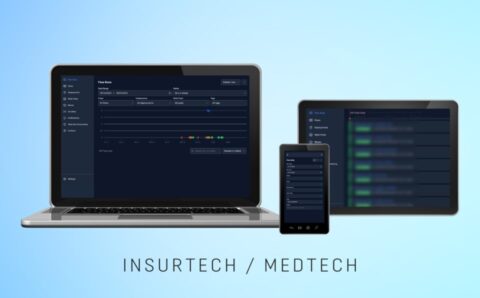
AI Healthcare Platform
Our AI platform streamlines admin tasks in healthcare, automating patient services and boosting operational efficiency in European institutions.
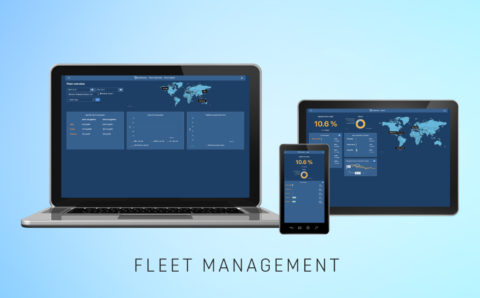
Spark
With Spark, fleet managers get transparency on fuel use, identify inefficiencies, drive change through real-time energy efficiency rankings.
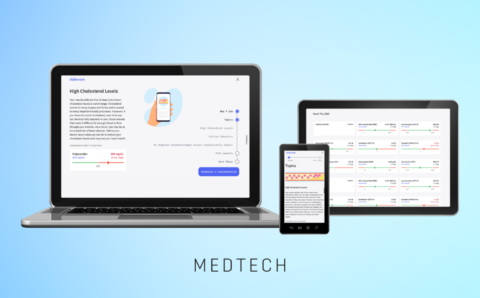
Elaborate
Elaborate’s software makes lab results accessible through auto alerts, clear summaries & educational resources, streamlining patient management.
Stages in Product Development
Understanding the various product stages of development is beneficial for setting a streamlined and efficient path from concept to market-ready product. Let’s determine the order of priority within these concepts, and the distinction between a prototype, PoC vs MVP.
For several startup clients, including those in insurtech and healthtech, we’ve guided the transition from PoC to MVP. For example, with a startup developing a platform for personalized lab result summaries, we initially delivered a PoC to validate feasibility. This then evolved into a functional MVP with real-time data integration and appointment scheduling. Our firsthand experience shows that while a PoC proves technical viability, the MVP tests market fit with real user feedback, ensuring a smoother and more cost-effective product launch.
PoC
The PoC stands as the initial stage in product development, designed to validate the feasibility and technical viability of a concept. The integral aim of PoC is to confirm if an idea can be practically implemented. PoCs are effective in reducing the risk of working on full-scale development without a solid foundation.
Prototype
Prototypes enter the game after defining the PoC. They are instrumental in designing the user interface and interactions for the product, offering a visual and interactive representation of the final product. Prototyping is a significant step in refining the product’s design and functionality, ensuring that it aligns with user expectations and market demands.
Minimum Viable Product (MVP)
Following the prototype, the MVP takes the last stage. It is a milestone, basically comprising the final and operating product development. The difference between MVP vs PoC is that the first one is built to deliver a functional yet minimalist and basic version of the product, aiming to check its viability in the real market. It serves as the bridge between the validated concept and the comprehensive product, enabling iterative development based on user feedback and market response.
For your information, there’s such a concept as a pilot project. It involves putting a product into action on a small scale to assess its real-world performance with real users. Often, pilot projects are conducted after the idea has been validated through PoC or MVP stages, allowing for a more comprehensive evaluation of its practical impact.
Scope
When it comes to product development, clarity in defining the scope of your initiative is crucial. So is distinguishing the peculiarities of each concept.
PoC
The scope of a PoC essentially proves a particular technical or conceptual idea. It may not necessarily have a user-facing interface or feature set. PoCs imply experimentation and validation, serving as the testing ground to ascertain the feasibility of a brand-new idea or technology.
Prototype
Prototypes are primarily centered around the user interface. While they provide a visual representation of the product, they may not comprise functional backend components. The primary purpose of a prototype is design and usability testing, helping stakeholders and developers understand how the product will look and feel to end-users.
MVP
An MVP incorporates the fundamental set of features needed to address a specific problem or fulfill a core need effectively. Its primary aim is rapid development and launch, ensuring the product quickly reaches its first users for feedback and validation. MVPs are focused on delivering essential functionality, prioritizing what’s crucial to solve the problem and fulfill the stated purpose.
User Interaction
User interaction is an indispensable aspect of product development. Let’s explore how user interaction varies across MVPs, PoCs, and prototypes, figuring out their unique characteristics.
PoC
Proofs of Concept typically lack extensive user interaction. Their primary goal is to test underlying concepts or technologies, and they often serve as technical experiments. While user interaction is not the main focus, some PoCs may offer limited interaction to showcase the potential and prosperity of a concept. However, the emphasis is primarily on the technical feasibility and not the user experience.
Prototype
Prototypes, on the contrary, place a strong focus on user interaction and UI design. They aim to provide a visual and interactive representation of the product’s user interface. While prototypes may lack functional backend logic, their primary goal is to allow users to interact with the design, providing a clear representation of the user experience and user interface design. Prototypes are invaluable for design validation and real user testing.
MVP
A Minimum Viable Product aims to provide users with a real and tangible experience. It incorporates functional features, although the feature set is limited compared to the final product. The difference between MVP and PoC is that the first one is designed to serve real users and gather feedback to validate the product’s viability and gather insights for further development. User interaction and opinion are key components of MVPs, as they strive to address real user needs with a scaled-down feature set.
Development Time
In the product development sector, time is a precious resource, meaning different concepts of development demand varying levels of it.
PoC
While a PoC is developed relatively quickly to showcase technical feasibility, it may not be as time-sensitive as an MVP. Its focus is primarily on proving that a concept can be realized from a technical point of view, balancing the need for a decreased time-to-market with the need for technical verification.
Prototype
The development time of a prototype is flexible and dependent on the complexity of the user interface. However, it often proceeds at a faster pace than an MVP, focusing on visual and functional representation rather than a complete, market-ready product.
MVP
An MVP is engineered within a comparatively decreased time frame, with a primary goal of rapid product validation and quick market entry. The essence of an MVP lies in its swiftness, allowing for the efficient testing of core assumptions and user feedback incorporation.
Feedback and Iteration
The process isn’t finished with the creation of a prototype, MVP or PoC. Let’s understand how vital the phase of gathering feedback and the iterative process that follows are, each tailored to the specific stage of development.
PoC
For Proof of Concept, feedback often relates to the technical feasibility of the concept. Nonetheless, this feedback can be a core element of further development or elevation of the concept. The difference between PoC and MVP implies that the first one fills in the gap between a visionary idea and its practical implementation, with feedback forming the further direction.
Prototype
In the context of prototypes, feedback plays a vital role in usability testing and design validation. User opinion takes part in enhancing the interface and experience, ensuring the final product meets user expectations. Prototypes are a canvas for aligning design with the requirements and preferences of the audience.
MVP
As for the Minimum Viable Product, users’ insights assist in driving the product toward greater completeness. The feedback loop with MVPs allows for the implementation of seamless adjustments, catering to user needs and iterating toward a more robust and user-centric product.
Risk Mitigation
Each concept is the key instrument in eliminating diverse types of risks, let’s discuss which ones and how.
PoC
The Proof of Concept stage is executed to address technical risks head-on. It can be described as the laboratory where the feasibility of an idea or technology is validated. Consequently, PoCs allow for the identification and resolution of technical challenges, ensuring that the development process progresses with a solid technical foundation.
Prototype
Prototypes are valuable in minimizing design and usability risks. Obtaining and delivering a visual and interactive representation of the product, designers, and stakeholders examine how it will look and interact. This hands-on experience is significant in adapting the design, making sure it aligns with user expectations, and mitigating potential usability challenges.
MVP
An MVP serves as a dynamic protection against market and user acceptance risks. Launching a product with the core necessary features allows real users to interact with and provide feedback. This insight enables adjustments to align with user needs and preferences, reducing the risk of developing a product that has exceeding functionality.
Ready to Build Your MVP?
Partner with us to create a high-quality MVP that validates your concept and gets you to market faster.
Selecting the Right Approach for Your Project
Choosing the most fitting approach plays a critical role in the success of your project. By choosing the right approach, you can save time and resources and navigate your project to success.
Understand Your Project Goals
Consider the primary objectives of your project. Are you aiming to validate a concept, test specific features, or demonstrate a full product?
-
- If your primary goal is to validate a concept or idea, a Proof of Concept can be the relevant option.
- In case you are seeking to implement a functional product with a minimal set of features, an MVP is more appropriate.
- For user testing, idea communication, or design validation, a Prototype is often the best option.
Assess Budget Constraints
Evaluate your budget limitations adequately for each concept.
-
- PoCs tend to be more cost-effective, as they focus on proving the feasibility of an idea without full development.
- Whereas, MVPs are more resource-demanding, as they require functional development.
- Prototypes can vary in cost depending on their fidelity.
Choose the approach that aligns with your financial resources. If you’re working with a limited budget, consider starting with a PoC or low-fidelity Prototype to minimize costs.
Consider Timeline
Examine your project’s timeline and deadlines, keeping in mind the duration of each option.
-
- PoCs are quicker to develop, focusing on the viability of the core idea.
- Yet, MVPs require more time due to the creation of a functional product.
- Prototypes can be developed relatively quickly in turn.
If you have a tight deadline and urgently need quick validation, a Prototype or PoC might be the better choice. In cases when the time is not a critical factor, you can opt for an MVP.
Identify Your Target Audience
Think about the audience you want to engage.
-
- PoCs are primarily for internal use to demonstrate technical feasibility.
- MVPs are for early adopters who are eager to use and provide feedback on a minimum set of features.
- Prototypes are often used to engage stakeholders or conduct user testing.
Choose the approach that best aligns with your target audience. If you need internal buy-in, PoCs or Prototypes can be effective. For early customer feedback, an MVP is the way to go.
We’ve singled out the critical concepts of Proof of Concept, Minimum Viable Product, and prototypes in the realm of product development. Let’s conclude with the key takeaways:
-
- Strategic tools. PoCs illuminate the feasibility of an idea, MVPs validate market fit, and prototypes refine design and functionality.
- Efficiency and validation. Each concept serves a unique purpose in the development process, saving resources, mitigating risks, and verifying the idea.
- User-centric approach. Prototypes employ user feedback to create user-driven products. PoCs are more about checking the technical ability to bring the concept to reality, whilst MVP is also based on the user requirements for further extension.
We engage you to apply this comprehensive guidance to your projects. Make use of PoCs, MVPs, and Prototypes as your dedicated assistants in the roadmap for innovation and customer-centric product development. As a result, you’ll not only save time and resources but also position yourself to deliver products that truly resonate with your target audience. Obtain the full potential of these concepts, and make your win the market of your industry.

